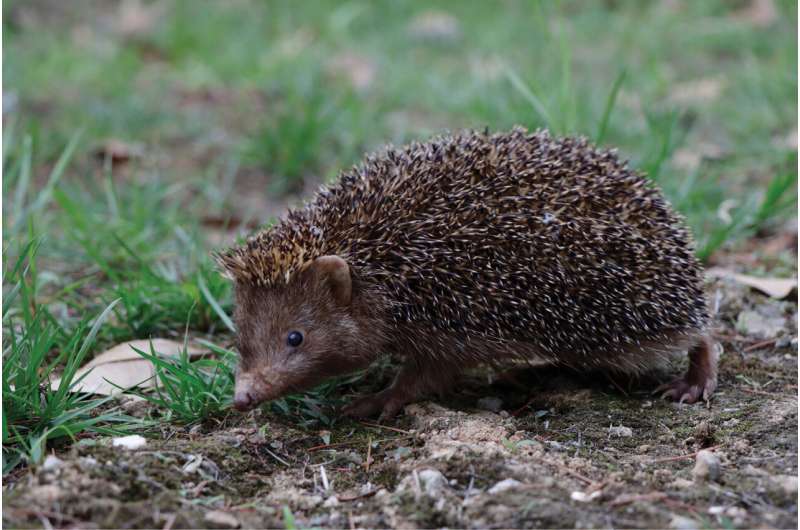December 19, 2023 report
This article has been reviewed according to Science X's editorial process and policies. Editors have highlighted the following attributes while ensuring the content's credibility:
fact-checked
peer-reviewed publication
trusted source
proofread
Newly discovered hedgehog species diverged from others more than a million years ago

Researchers at Anhui Normal University, Wuhu, China, have announced the discovery of a new species within the hedgehog genus Mesechinus. The eastern China hedgehog species was found to be distinct from other regional hedgehogs across morphological and phylogenetic characteristics.
In their paper, "A new species of forest hedgehog (Mesechinus, Erinaceidae, Eulipotyphla, Mammalia) from eastern China," published in the open access journal ZooKeys, the research team details the analysis resulting in the decision to formally describe a new species of hedgehog, Mesechinus orientalis.
Previously known Mesechinus species (M. dauuricus, M. hughi, M. miodon, and M. wangi) mainly inhabit northern China, Mongolia, Russia and southwestern China. This new species is exclusive to eastern China.
Seven Mesechinus specimens were collected from eastern China between 2018 and 2023 to determine which species of hedgehog they were. The researchers utilized various methodologies, including morphological measurements, mitochondrial genome sequencing, assembly, annotation, and phylogenetic analysis using genetic data from several Mesechinus species and related hedgehog genera obtained from GenBank.
Morphological, morphometric, and genetic evidence supported the recognition of Mesechinus orientalis as a new species, distinct from the previously recognized species within the genus Mesechinus. The new species shares morphological similarities with M. hughi but is distinguishable by its smaller size, shorter spines, and specific cranial characteristics.
Divergence times were estimated from the most recent common ancestor. The genus Mesechinus began to appear in the early Pleistocene around 1.71 million years ago. M. orientalis was estimated to have diverged from M. hughi and M. wangi ancestor approximately 1.10 million years ago. In comparison, M. hughi and M. wangi diverged from each other about 0.74 million years ago.
These long time frames since divergence indicate that the hedgehogs have been isolated from one another for a long time, likely due to climatic shifts during the Pleistocene that altered migration routes and led to prolonged geographic isolation.
More information: Zifan Shi et al, A new species of forest hedgehog (Mesechinus, Erinaceidae, Eulipotyphla, Mammalia) from eastern China, ZooKeys (2023). DOI: 10.3897/zookeys.1185.111615
Journal information: ZooKeys
© 2023 Science X Network





















